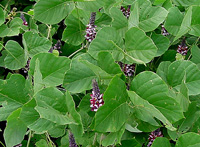A federal ag department researcher says the U.S. Department of Agriculture is not trying to take the by-products of biofuels out of the livestock feed system… just trying to find more uses for what’s leftover after biodiesel and ethanol are produced.
 This story from redOrbit.com says Kurt Rosentrater wants to assure livestock producers that his studies on using dried distillers’ grains (DDGs) to make plastics are not intended to divert feed from the livestock industry… something he has been doing at the USDA’s Agricultural Research Service North Central Agricultural Research Laboratory in Brookings, S.D., since 2004:
This story from redOrbit.com says Kurt Rosentrater wants to assure livestock producers that his studies on using dried distillers’ grains (DDGs) to make plastics are not intended to divert feed from the livestock industry… something he has been doing at the USDA’s Agricultural Research Service North Central Agricultural Research Laboratory in Brookings, S.D., since 2004:
“The thing that was on everyone’s mind back then was the 10 million-ton question: What are we going to do with all this distiller’s grain?” he says. “This was back when it was 5 (million) or 6 million tons a year production. And now it’s 16 (million), 17 (million), 18 million tons, so people are asking me, ‘Why are you taking this valuable feed and putting it in plastic?’ ”
Rosentrater says he’s not. He wants to take the remains after the feed components are extracted and use that for bio-plastics.
“We’ve only taken a couple steps down that path right now, but that’s ultimately where I’d like to see this go,” he says. “So can you provide the animals their livestock feed and biodiesel, if you pulled the oil out, and other things, and then what can you do with what’s left?”
DDG production this year reached 17 million tons, the vast majority of which went to animal feeds in the cattle, swine and poultry industries.
Because of this, Rosentrater does not see a need right now to find new things to do with DDGs.
“But five years from now, 10 years from now, when we have the large-scale bio-refineries working on corn, ligno-cellulosic materials and other biofuels, there will be a need potentially at some point to say, ‘What can we do with this if it has no animal feed value?’ ” he says.
A key point of Rosentrater’s research is to find something better than oil for products we use every day… a point that ethanol and biodiesel producers are also trying to do.
 The Center of Excellence for Hazardous Materials Management recently harvested commercial-scale quantities of algae from its test salt water ponds located at New Mexico State University Agriculture Science Center in north Eddy County, according to Wren Prather-Stroud, spokeswoman for the nonprofit organization based in Carlsbad.
The Center of Excellence for Hazardous Materials Management recently harvested commercial-scale quantities of algae from its test salt water ponds located at New Mexico State University Agriculture Science Center in north Eddy County, according to Wren Prather-Stroud, spokeswoman for the nonprofit organization based in Carlsbad.


 The heads of Canada, France, Germany, Italy, Japan, Russia, the U.K., and the U.S. said they will work to develop science-based benchmarks and indicators for biofuel production and use. The leaders also said they are committed to “continuing research and development of second generation biofuels made from non-food plant materials and inedible biomass.”
The heads of Canada, France, Germany, Italy, Japan, Russia, the U.K., and the U.S. said they will work to develop science-based benchmarks and indicators for biofuel production and use. The leaders also said they are committed to “continuing research and development of second generation biofuels made from non-food plant materials and inedible biomass.” Rick Boydston and his team with USDA’s Agriculture Research Service recently completed a study on the use of dried distillers grains, or DDGS, as a weed deterrent in container-grown ornamentals. The study was published in the
Rick Boydston and his team with USDA’s Agriculture Research Service recently completed a study on the use of dried distillers grains, or DDGS, as a weed deterrent in container-grown ornamentals. The study was published in the 
 Billionaire oilman T. Boone Pickens is choosing a decidely non-petroleum source as the solution for America’s energy woes: wind power.
Billionaire oilman T. Boone Pickens is choosing a decidely non-petroleum source as the solution for America’s energy woes: wind power.
 “The U.S. Secretaries of Agriculture and Energy say that biofuels-related feedstock demand plays only a small role in global food supply and pricing. Worldwide, the estimated increase in the price of soybeans and soybean oil would increase the global food commodity price index by 1-2 percent. In the U.S., according to the Department of Energy and USDA, food prices have increased by about 4.8 percent. Of that increase, ethanol and biodiesel consumption accounted for only 4 or 5 percent while other factors accounted for 95-96 percent of the increase.
“The U.S. Secretaries of Agriculture and Energy say that biofuels-related feedstock demand plays only a small role in global food supply and pricing. Worldwide, the estimated increase in the price of soybeans and soybean oil would increase the global food commodity price index by 1-2 percent. In the U.S., according to the Department of Energy and USDA, food prices have increased by about 4.8 percent. Of that increase, ethanol and biodiesel consumption accounted for only 4 or 5 percent while other factors accounted for 95-96 percent of the increase.
 Making ethanol from a nuisance weed could be an idea whose time has come.
Making ethanol from a nuisance weed could be an idea whose time has come.  Doug Mizell is a co-founder of Agro*Gas Industries, LLC, which he promotes on
Doug Mizell is a co-founder of Agro*Gas Industries, LLC, which he promotes on  Minnesota Corn Growers treasurer Chad Willis says corn growers will be out at the events, talking to the fans and promoting ethanol. “For the past few years we’ve done an ethanol trivia contest with the t-shirts as a prize,” said Willis, who is a farmer from Willmar and one of the volunteer coordinators for the event. “It’s a great way to get our message across because it has the crowd listening carefully so they know the answer if they get called up. The best way to learn something is to learn it and repeat it.”
Minnesota Corn Growers treasurer Chad Willis says corn growers will be out at the events, talking to the fans and promoting ethanol. “For the past few years we’ve done an ethanol trivia contest with the t-shirts as a prize,” said Willis, who is a farmer from Willmar and one of the volunteer coordinators for the event. “It’s a great way to get our message across because it has the crowd listening carefully so they know the answer if they get called up. The best way to learn something is to learn it and repeat it.”